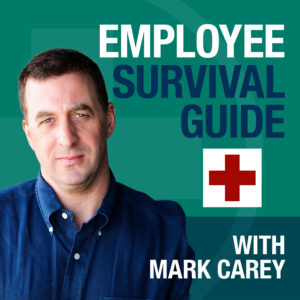On February 13, 2024, US Supreme Court issued a very favorable decision for Sarbanes-Oxley whistleblowing employees at public companies, overriding a 2d Circuit decision. The decision holds that employees DO NOT have to prove retaliatory intent to make a claim, only show that the whistleblowing was a “contributing factor” a much lower burden. While the employer must show by “clear and convincing evidence” that it would have taken the same action otherwise, a much more exacting standard for employers.
According to the SCOTUSblog.com, “The Sarbanes-Oxley Act of 2002 protects whistleblowers who report financial wrongdoing at publicly traded companies. Trevor Murray claims that UBS Securities, LLC, and UBS AG fired him in retaliation for reporting alleged fraud on shareholders. Murray sued UBS under the act’s whistleblower protection provision, 18 U.S.C. § 1514A, and the jury returned a verdict in his favor. The federal district court in Manhattan, however, did not instruct the jury that a Sarbanes-Oxley antiretaliation claim requires a plaintiff to show that the employer intended to retaliate. The U.S. Court of Appeals for the 2nd Circuit concluded that was error. It reasoned that because Section 1514A prohibits publicly traded companies from taking adverse employment actions to “discriminate against an employee … because of” whistleblowing, that provision requires a whistleblower to prove by a preponderance of the evidence that the employer took the adverse employment action with retaliatory intent — i.e. , an intent to “discriminate against an employee … because of” whistleblowing. The 2nd Circuit thus reversed.”
“In his petition, Murray argues that the 2nd Circuit’s ruling was wrong. He argues that when a whistleblower invokes the act and claims he was fired because of his report, Section 1514A(b)(2)(C) of the act provides the claim is “governed by the legal burdens of proof set forth in section 42121(b) of title 49, United States Code.” Under that cross-referenced framework, a whistleblowing employee meets that burden by showing that his protected activity “was a contributing factor in the unfavorable personnel action alleged in the complaint.” If the employee meets that burden, the employer can prevail only if it “demonstrates by clear and convincing evidence that the employer would have taken the same unfavorable personnel action in the absence of that behavior.” Therefore, Murray contends, the 2nd Circuit applied too exacting a standard, and his case implicates a circuit split on the proper standard…”
U.S. Supreme Court Rules in Favor of Whistleblowers
The Court, by unanimous vote (9-0), held in favor of Murray and all employees, “A whistleblower who invokes 18 U. S. C. § 1514A bears the burden to prove that his protected activity ‘was a contributing factor in the unfavorable personnel action alleged in the complaint,’ 49 U. S. C. § 42121(b)(2)(B)(i), but he is not required to make some further showing that his employer acted with ‘retaliatory intent.’ The judgment of the U. S. Court of Appeals for the Second Circuit is reversed for the reasons explained above, and the case is remanded for further proceedings consistent with this opinion.” (To read the full decision click: Murray v. UBS Sec., LLC, No. 22-660, 2024 WL 478566 (U.S. Feb. 8, 2024))
What is Covered by SOX and How to File a Claim
An employer cannot discharge or otherwise retaliate against an employee because he or she provided information, caused information to be provided or assisted in an investigation by a federal regulatory or law enforcement agency or more importantly participated in an internal company investigation regarding alleged mail fraud, wire fraud, bank fraud, securities fraud, violations of SEC rules and regulations or violation of federal laws relating to fraud against shareholders.
Employees who experience a firing or layoff, blacklisting, demotion, discipline or intimidation may file a SOX complaint with the U.S. Department of Labor/OSHA. Employees have 180 days to file an agency claim or risk waiver of the claim. Employees can file claims by going to the OSHA website www.osha.gov/html/RAmap.html or call OSHA at 1-800-321-OSHA (6742). For a copy of SOX, the regulations (29 CFR 1980), and other information go to www.osha.gov and click on the link for Whistleblower”.
You will need the assistance of an employment lawyer familiar with the OSHA complaint process, please contact Carey & Associates, P.C. for more information 203-255-4150 or send an email to info@capclaw.com.
Employee Survival Guide Podcast- Listen Here

